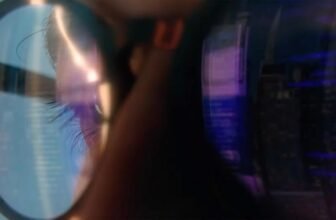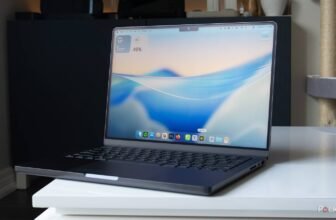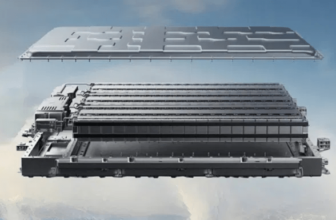LISA, a $1.6 billion gravitational wave observatory set to launch subsequent decade, will revolutionize the best way we see gravitational waves—the infinitesimal perturbations of spacetime first predicted over a century in the past and solely detected eight years in the past.
Within the fall, we revealed a deep-dive into LISA’s design and the engineering hurdles that should be overcome to get the futuristic craft into area. Now, we’ve requested scientists in regards to the precise information LISA will accumulate—what insights that information may yield and the way these insights stand to alter our understanding of the universe, from the sources of its gravitational ripples to the best way these reverberations form the cosmos.
LISA: Easy but exact
LISA stands for the Laser Interferometer House Antenna, and contains three spacecraft orbiting the Solar in a set triangular formation. LISA is an interferometer, that means that the mission will sniff out gravitational waves utilizing laser interferometry—measuring the distances between plenty utilizing extremely exact laser beams about 5 million miles (8 million kilometers) lengthy, with every arm of LISA’s triangle comprising about 1.6 million miles (2.5 million km) of that size.
The lasers are essential however just one a part of LISA’s design—they’re simply the measuring sticks for distances between three metallic cubes, one in every of the three LISA spacecraft. The cubes are fabricated from a gold-platinum alloy to attenuate the magnetism that might act on them. Once more, the aim of LISA is to cruise by means of area with positively nothing touching these cubes however spacetime and the gravitational ripples that experience on it.
“The essential thought behind the design is that we’re launching these cubes,” mentioned Saavik Ford, an astrophysicist on the American Museum of Pure Historical past, in a name with Gizmodo. “We simply need them to take a seat there and expertise the enjoyment of spacetime with no different forces performing on them, and it’s that final half that’s the arduous half.”
“It’s essential to maneuver the craft because the plenty [the gold-platinum cubes] are falling, to verify the spacecraft itself doesn’t drift into the plenty and whack them, which might be horrible,” Ford added.
So far as greedy the complexity of LISA, Ford’s then-graduate scholar Jake Postiglione has an analogy: The technical problem is akin to firing a laser from New York to LA (if the Earth was flat), and attempting to hit a fruit fly’s eyeball with it. And each the laser and the fruit fly are shifting as that operation unfolds.
The dimensions of the engineering problem is “frankly mind-blowing,” Ford mentioned, “and I’m so glad that it isn’t my division.”
NASA is offering a number of components of LISA’s instrumentation, together with its laser system, telescope methods, and the gadgets that may handle ranges of electrical cost on the take a look at cubes.
The frequency of orbiting objects is set by how typically they full a full orbit round one another. Our gravitational wave detectors are good at detecting sure frequencies for a wide range of causes, however each current detector has one main limitation: They’re caught on Earth.
An area-based oracle for historical black holes
Gravitational wave detectors range within the sorts of orbital frequencies they detect. Floor-based detectors—specifically the LIGO-Virgo-KAGRA Collaboration—are nice at detecting excessive frequencies, which correspond to smaller plenty like black holes the scale of stars. However when these plenty get just a little bigger—say, greater than 200 instances the mass of our Solar—their orbital frequencies are an identical vary to the noise produced by our personal planet.
“There may be mainly a frequency the place the Earth itself is simply so noisy that the bottom is your drawback,” Ford mentioned. “You actually can’t do it. It’s a must to go to area, a technique or one other.”
In area, pulsar timing arrays make for a helpful measuring stick for the biggest black holes, although Earth continues to be a part of the equation. In that setup, observatories on Earth monitor the dependable flashes of sunshine from quickly spinning objects (pulsars); when the timing of that gentle to Earth is barely delayed or hastened, it’s a sign that spacetime was stretched or compressed by gravitational waves. In 2023, a bunch of pulsar timing array collaborations discovered robust proof of a gravitational wave background in pulsar information.
The black holes seen by pulsar timing arrays are usually billions of instances the mass of the Solar and reside on the heart of monster galaxies—they even dwarf Sagittarius A*, the black gap on the heart of the Milky Means, which clocks in at roughly 4 million photo voltaic plenty. If black holes have been porridge, LISA can be Goldilocks. The mission will sniff out low frequency gravitational waves which are nigh not possible to distinguish from noise in Earth-based detectors. That mentioned, the space-based observatory may be able to detect large black gap mergers—star-sized black holes falling into supermassive ones—together with intimate binaries of compact objects and different astrophysical bursts and backgrounds.
“Pulsar timing arrays give us details about the stochastic background for large black gap binaries at very low frequencies, and LIGO has mainly set bounds on the charges from the completely different households of stellar-mass compact object mergers,” mentioned Emanuele Berti, a theoretical physicist at Johns Hopkins College, in a video name with Gizmodo. “The considering has modified in numerous methods, however I might say that essentially the most attention-grabbing science that we are able to do with LISA is centered round large black gap binary mergers, as a result of that’s one thing that we simply can’t probe on the bottom.”
Dodging noise in area
Although LISA could have far fewer disturbances in area than on Earth—ideally zero—the observatory must sift by means of cosmic noise. There are objects within the universe that make black holes a lot tougher to see as a result of in addition they emit gravitational waves. Probably the most vexing type of these compact interlopers are white dwarf binaries: compact shells of former stars that orbit each other and finally merge, stirring up spacetime within the course of like whisks in a mixer. The exception to this noise might be when the binaries are so pronounced that they are often picked out individually and acknowledged for what they’re. A cosmic double-edged sword, these “verification binaries” will assist astronomers affirm LISA’s capabilities as soon as the mission is in place.

LISA will concurrently detect noise from hundreds of thousands of sources, lots of that are inside our galaxy, according to NASA. Scientists will separate the wheat from the chaff with the assistance of an amazing quantity of knowledge processing and becoming the information to current theories and fashions of the universe’s identified objects. With over a decade till LISA is predicted to launch, scientists are engaged on mock information challenges to arrange for the actual deal.
Tracing cosmic evolution
“There are literally solely two questions in astrophysics, and they’re ‘how did we get right here?’ and ‘are we alone?’” Ford mentioned. “Each single factor that we do is geared in direction of answering some small piece of 1 or the opposite, and infrequently each, of these questions.”
“We’re not within the black holes recreation typically talking to reply something to do with ‘are we alone?,’” Ford added. “However the ‘how did we get right here is fairly necessary to know these black holes.”
Understanding the delivery, life, and demise of stars—and the position of those nuclear fusion furnaces in producing the weather—is inextricably tied to the presence of black holes. Moreover, the sorts of stars shaped by galaxies and the amount by which they kind could also be linked to the mass and habits of the black holes at these galaxies’ cores. Black holes could be messy eaters—typically burping up stellar material and flinging it out into area—making them active participants within the evolution of the universe round them.
Webb House Telescope observations of the Little Pink Dots see the splotches of sunshine as they have been when the universe was between 600 million years previous and 1.5 billion years previous. Although recent research signifies the dots are indicators of beforehand obscured black gap progress within the early universe—and cosmological fashions aren’t “damaged” as headlines prompt—LISA observations would assist reveal the precise nature of the puzzling gentle sources.
LISA will observe the churning of black holes and higher characterize the array of compact objects in our universe. That data can be utilized to current cosmological fashions and prevailing theories, comparable to Einstein’s normal relativity. The bottom-truth information (so to talk—we’re speaking about area right here) might be a compelling stress take a look at for these concepts in regards to the universe, certainly one of which was famously validated when LIGO first detected gravitational waves in 2015. There are many identified unknowns within the inky black yonder of spacetime, however LISA scientists are decided to tug again the curtain—if solely a bit—on among the universe’s most foundational mysteries.
Trending Merchandise

Dell SE2422HX Monitor – 24 inch FHD (1920 x 1080) 16:9 Ratio with Comfortview (TUV-Certified), 75Hz Refresh Rate, 16.7 Million Colors, Anti-Glare Screen with 3H Hardness, AMD FreeSync- Black

LG 34WP65C-B UltraWide Computer Monitor 34-inch QHD (3440×1440) 160Hz, HDR10, AMD FreeSync Premium, Built-In Speaker, Borderless Design, Tilt/Height Stand, HDMI DisplayPort, Black

CORSAIR 6500X Mid-Tower ATX Dual Chamber PC Case â Panoramic Tempered Glass â Reverse Connection Motherboard Compatible â No Fans Included â Black

CHONCHOW 87 Keys TKL Gaming Keyboard and Mouse Combo, Wired LED Rainbow Backlit Keyboard 800-3200 DPI RGB Mouse, Gaming for PS4 Xbox PC Laptop Mac

Cooler Master Q300L V2 Micro-ATX Tower, Magnetic Patterned Dust Filter, USB 3.2 Gen 2×2 (20GB), Tempered Glass, CPU Coolers Max 159mm, GPU Max 360mm, Fully Ventilated Airflow (Q300LV2-KGNN-S00)

Lenovo IdeaPad 1 14 Laptop, 14.0″ HD Display, Intel Celeron N4020, 4GB RAM, 64GB Storage, Intel UHD Graphics 600, Win 10 in S Mode, Ice Blue

Basic Keyboard and Mouse,Rii RK203 Ultra Full Size Slim USB Basic Wired Mouse and Keyboard Combo Set with Number Pad for Computer,Laptop,PC,Notebook,Windows and School Work(1 Pack)

MONTECH XR, ATX Mid-Tower PC Gaming Case, 3 x 120mm ARGB PWM Fans Pre-Installed, Full-View Dual Tempered Glass Panel, Wood-Grain Design I/O Interface, Support 4090 GPUs, 360mm Radiator Support, White

Apple 2024 MacBook Air 13-inch Laptop computer with M3 chip: 13.6-inch Liquid Retina Show, 8GB Unified Reminiscence, 256GB SSD Storage, Backlit Keyboard, Contact ID; Midnight





